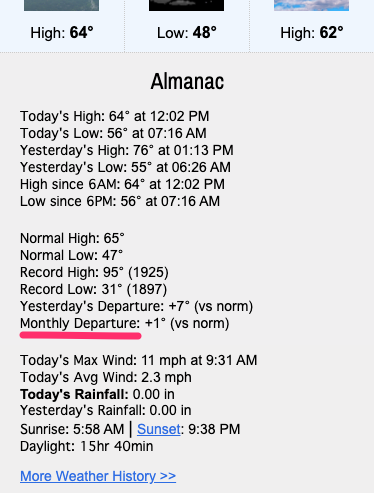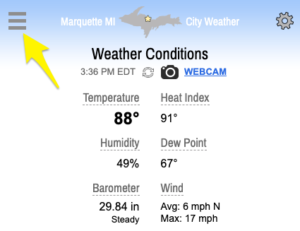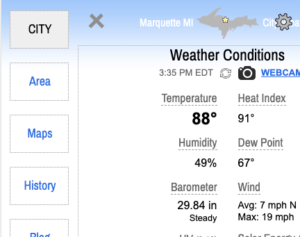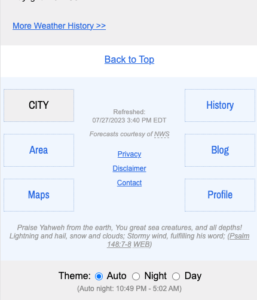 Perhaps you’ve noticed the field “Monthly Departure” in the Almanac on the City page (home page)? Its value represents the current aberration from the 30-year normal average temperature for the calendar month.
Perhaps you’ve noticed the field “Monthly Departure” in the Almanac on the City page (home page)? Its value represents the current aberration from the 30-year normal average temperature for the calendar month.
Previously, this field was being calculated on a month-to-date basis. That meant that if, for example, only 2 days had passed in the month, and those first two days were very hot or very cold, then the departure value would be quite large (either negatively or positively).
As of today we are calculating the departure as a full month preloaded with normal average temperatures. We replace each day’s normal average temperature with an observed daily average temperature as it occurs. This results in much smaller departures earlier in the month.
We feel this updated methodology is a more accurate representation of reality where trends emerge gradually. Climate, by definition, is the general tendency of observed phenomena — in this case temperatures — to occur within certain boundaries over a long-term period. A few days, or even a week, does not determine the outcome of an entire month.
So, to demonstrate…. The first 4.5 days of June 2023 have been unseasonably warm and yet have only resulted in a +1.4° departure (which rounds down to +1°) for the month. We are no longer assuming there will not be 25 days to come. Instead, we put in normals for those remaining days and witness how much our recent weather skews the entire month.
A couple hundred lines of code have gone into this single field (“Monthly Departure”) in the Almanac. This is the sort of thing that sets this website apart from other weather sources.




